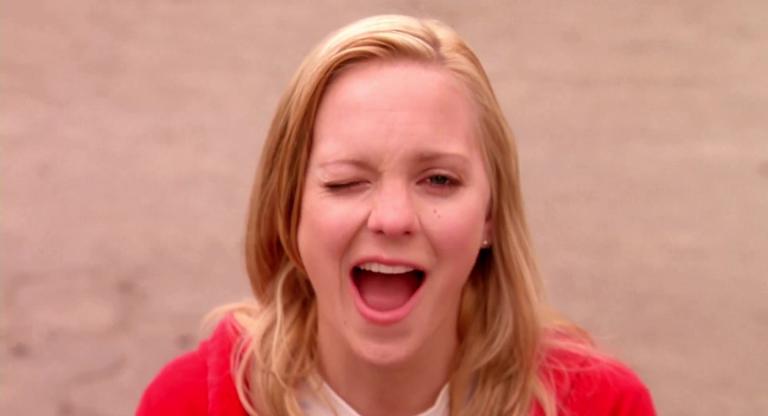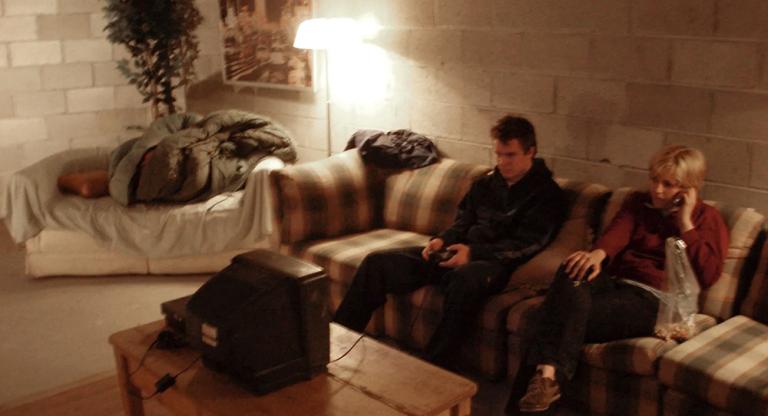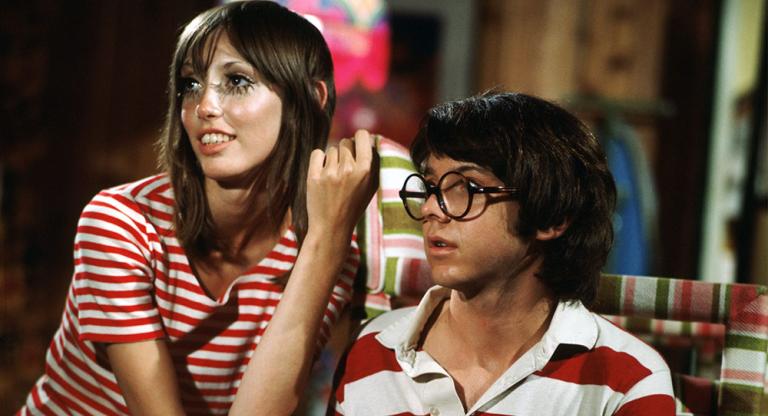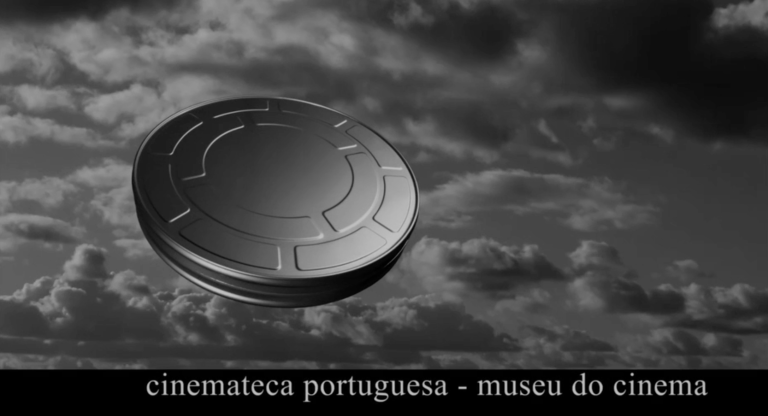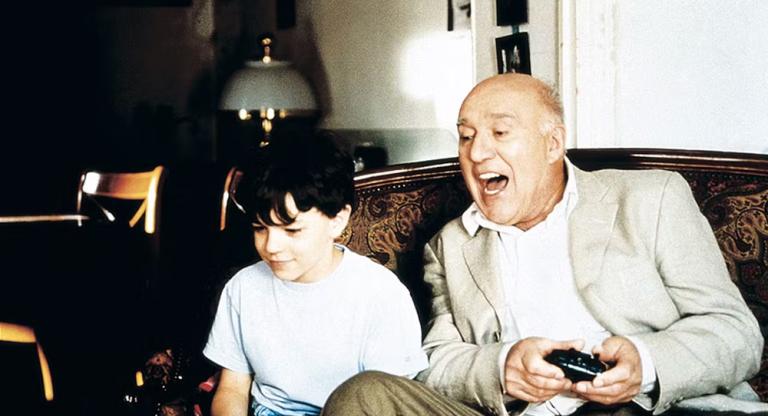If Frederick Wiseman doesn’t come quickly to mind when you’re contemplating the living legends of American filmmaking, you need to recalibrate your understanding of the 95-year-old documentarian behind Titicut Follies (1967), High School (1968) and dozens of other features, including his most recent one, Menus-Plaisirs, les Troisgros (2023).
There’s no better way to do that than to watch and rewatch his movies. For the past four years, there has been an enjoyable incentive to do just that while following along with one of the best and most serious cinephile podcasts out there. Wiseman Podcast brings guest scholars, critics and filmmakers (including, on two episodes so far, Wiseman himself) to discuss his multifaceted films. If that sounds like too much of a commitment, one of the co-hosts, Arlin Golden, lives in San Francisco and has spearheaded a manageable seven-title retrospective devoted to Wiseman at the Roxie this Spring.
Cherry-picking choice titles from 32 of the Wiseman films shot on 16mm—newly available in 4K restorations that were recently shown in near-complete retrospectives in New York, Chicago and Los Angeles—Golden has built on his experience programming (mostly) short films at Oakland’s annual Drunken Film Festival to present a carefully-curated introduction for the Wiseman newcomer. But the series should also lure the filmmaker’s longtime Bay Area fans to check out some of their favorites in visually sparkling new editions.
Titled “THIS IS AMERICA: Frederick Wiseman – 7 Dispatches,” the series is bracketed by two Manhattan-set masterpieces: the fast-paced and self-reflexive Model (1981), and his first epic-length (over two-and-a-half hours) film Welfare (1975). The series also includes two of Wiseman’s three National Film Registry inductees: his controversial debut Titicut Follies and the ‘60s hangover Hospital (1970). There’s also the first two of his many politically-minded “community” films, Canal Zone (1977) and Aspen (1991). And, later in the program, there’s Deaf (1986). This film is part of one of Wiseman’s most under-screened series, the “Talladega Tetralogy,” filmed at the Alabama Institute for the Deaf and Blind half a decade before the Americans With Disabilities Act was signed into law.
I recently spoke to Golden over tele-conferencing software. Our conversation has been edited for clarity and brevity.
Brian Darr: The Roxie seems like the ideal venue for a Frederick Wiseman revival in 2025. Did you approach them, or did they reach out to you?
Arlin Golden: I've been feeling immense guilt about not traveling to any of the three major markets that are doing the retros, especially back home to Chicago, or down a few hours drive to LA. I’d been trying to take people's temperature in various venues around the Bay about bringing them here. Through Drunken Film Fest, I got connected with Lex [Sloan] at the Roxie and brought this up organically. These retrospectives are happening all around the country. There are some cities that are doing a more curated program. The time is now; we need to do something here.
I convinced them enough that they moved things along, connected me with Rick Norris, the self-described Wiseman fan on the programming team there, and we got cooking. They had some ideas about certain films they were interested in, and I had my own ideas that I presented in response to that. I thought there were some glaring omissions and some things that, I thought, might have better alternatives. But ultimately, the edict from the Roxie was ticket sales. Knowing the cataclysmic state of movie theaters in the Bay since Covid, and that every screening needs to be profitable, I offered a top eight, and then a backup eight. Out of those, they picked the seven.
BD: It's a good mix, with most of the cinematographers Wiseman has worked with: three from William Brayne, three from John Davey, and one from John Marshall.
AG: Of course.
BD: In terms of topics, there’s a balance between portraits of communities, portraits of public and private institutions, and one of a nonprofit.
AG: I think there's a tendency, in general engagement with Wiseman, that you have the earliest films, you have the most recent films, and then there’s the chunk in the middle that gets ignored. That was the case with the first iteration the Roxie presented me with, and I wanted to make sure to have that core ‘80s and ‘90s chunk represented because I think it has a lot of the best films in his body of work. There’s [Titicut] Follies and Welfare—you have to have them. Their absence would be conspicuous in any retrospective. Then, it was a matter of what my favorites were. I didn't do any calculations about years between films, or anything like that, but I tried to, first and foremost, make this a program that I would want to buy all the tickets for. Hopefully, if I'm interested in seeing it, some other people around the Bay will be too.
BD: I’d want to go to most of them, especially Canal Zone, Aspen, Model, and, well, most of them. Deaf!
AG: I definitely wanted to be sure to get something from Talladega in there, because it's just so important.
BD: I hear you're a Deaf-head.
AG: Yeah, I ride for Deaf, for sure. It's an interesting film for new adherents to Wiseman, or people who are interested in becoming adherents. You have to perk up a little bit and use your powers of inference, deduction, and visual interpretation to create some kind of meaning out of what you’re seeing—if you don't know the content of the conversations that are happening because you don't speak ASL. What Wiseman asks us to do in every film, essentially, is just that. So this one really prompts you to engage with and read the films, and draw out the meaning from them. I think it's really critical when looking at his work.
Beyond that, not to make a lot of assumptions about what the popular conception is, or even if there is a popular conception for Wiseman, but I think people think the films are intimidating. They’re daunting, they're heavy, deal with weighty matters of society, they're like doing your homework, or eating your vegetables or something. That’s not my experience with the films, so I really wanted to put a group forth that pushes back against that and says, “No. These are fun. They're hilarious as well as contemplative, well-thought out and masterfully edited, and all these other more highfalutin’ things, but, first and foremost, they're just massively entertaining movies.”
BD: I can't imagine anyone who actually watched Model or Aspen thinking they were homework.
AG: Exactly.
BD: Have you had a chance to see any of these versions at all?
AG: This will be my first time seeing any of the restorations. A couple of years ago, I went back home to Chicago when the Chicago Film Society was doing a screening of a 35mm print of Hospital that had been preserved by the Library of Congress. I guess it's not exactly apples to apples. It's not digital, but seeing that was a revelation. And we spoke with Jane Tolmachyov, Wiseman's frequent colorist and collaborator since the ‘80s. She was telling us that these restorations truly present the films in a way that they've never been seen before, to the extent that they are correcting in-camera scratches on the original prints.
BD: Has the hippie hair in the gate in Hospital gone away?
AG: She specifically mentioned a hair scratch from Juvenile Court [1973]. They just take it out and it's smooth. The Hospital print I saw preserved all the grain. It was very clearly blown up for 35, like ants dancing on the screen, which I'm not complaining about. But I'm curious how much of that is retained, and how much is smoothed out. I don't want to say they're being revisionist, but it sounds like there is at least an element of that.
BD: I could be wrong, but I think some of them haven't played in Bay Area cinemas. I don't know if Deaf has ever screened here.
AG: Really good question. I feel like PFA did a retro.
BD: Their biggest one was in 2003. My first Wisemans were Primate [1974] and Missile [1988] at that retro, but it was still only 17 or 18 films. It didn't include any of the Talladega films. I don't think it had Aspen or Model. It did have most of the films up through Canal Zone.
AG: With exceptions here or there, the films didn't really start playing in art houses until La Danse [2009] and on, outside of major markets. They would all play at Film Forum or Lincoln Center, generally, and they played festivals. But the primary way people saw these films, for decades, was broadcast on PBS and never again.
BD: Yeah, or at non-theatrical venues if you were lucky. I think SFSU played Welfare around the time it came out, and the San Francisco Public Library had—and I think must still have—a 16mm Grove Press print of Titicut Follies somewhere in the bowels.
AG: Oh, dang, I need to talk to them!
BD: I used to work there and I’ve held the cans in my hands.
AG: The way I came to the films were through the Zipporah DVDs. Fred very wisely—my 9-to-5 is in non-theatrical doc distribution—cuts the rights close, self-distributes, and prioritizes institutional licensing and single-event screenings. For these kinds of films, that's the way to do it, for better or worse, if you're actually going to have some sort of sustainability in it. Obviously, he also benefits greatly from foundations and grants. And he had a run in the ‘70s and ‘80s where he was supported by PBS for half of the funding for his films. But I think it also adds to the mystique of the work—they have this aura of inaccessibility. Every screening is sort of an event for that reason, and not even every market has Kanopy, where they've been streaming since, I want to say, 2016.
BD Something like that. 2018, maybe?
AG: That was a five-alarm fire when they made that announcement. But still, it's not accessible everywhere. It's going to be interesting to see—hopefully it's still many years out—what happens posthumously to the films in terms of their accessibility. I imagine there's going to be less of a revenue incentive. I don't foresee them going on Netflix, or even becoming available on TV or anything like that. But I could very well envision these restorations turning into a Criterion box set. That would make them available to any individual who wants to have them in their own collection.
BD: Speaking of availability, it's almost exactly 20 years to the date that Wiseman visited the Pacific Film Archive. He was supposed to be introducing The Garden [2005/Unreleased], which then got held up in legal challenges, so he showed and discussed Central Park [1990] instead. Have you heard any more rumors about that one?
AG: Last we spoke to Fred, which was about a year ago or so now, the restorations, as I understand it, were maybe fully, at least partly funded by Steven Spielberg. They delivered a list, and Spielberg gave funding for that list. For whatever reason, The Garden was not on the list, so they weren't allocated to do the restoration for it
BD: Sounds like a crowd-funding opportunity.
AG: Take this with a grain of salt. I interviewed him for Monrovia, Indiana [2018] and asked him about the status of The Garden. He’s like, “Yeah, I think that'll come out in the next year.” He’s been saying that pretty reliably when asked for close to a decade. We asked Jane about it too, and she’d asked him the same thing. And Fred was like, “Wait, it's not on the list?” Anyone's guess is as good as mine, but I'm hopeful.
I heard from friends in New York that these screenings have sold out at Lincoln Center. I hope some of the excitement around the re-introduction of these films with the restorations will make gathering the funding for restoring and releasing The Garden much easier and quicker. But he's also intimated, in recent interviews, that he may be retired from filmmaking, or at least from making observational documentaries in the mode that he has for over 50 years now. And if that's the case, I could certainly see The Garden given a wide theatrical release in art houses across the country as a “new Wiseman film” in the absence of an actual new production.
BD That makes sense. I'm glad San Franciscans are getting a chance to contribute to this groundswell of Wiseman interest.
AG: I hope people come through. If they're successful, it'll give us a case to do some more. I don't know how much Wiseman Podcast has done to breed a new generation of Wiseman fans—I hope something. But it's hard to say how much that translates locally, IRL, because all I see is online social media and emails. The first installment in Wang Bing’s Youth [2023 - 2024] didn’t have the best turnout at the Roxie last year, but I also hosted a screening of Hoop Dreams [1994] just a couple months ago on a really rainy night, and that had a pretty solid turnout. What's the demand in the Bay Area for three-hour docs? Hopefully word-of-mouth builds after Model. The series is bookended by Model and Welfare, because I think those are—I want to say—crowd-pleasers. They're just so undeniable to me.
BD: God tier.
AG: Exactly. I wanted the introduction to be strong enough that it creates the incentive for people to keep coming back as the series progresses through the spring. That’s the hope.
BD: All of them are good introductions. In a way, Titicut Follies may be the least good introduction. It’s a bit uncharacteristic.
AG: I'm glad that's not the first film. It's the second film we're screening. I'm excited, as I've seen exactly one Wiseman film in a theater. I've either watched them on Kanopy, or on my Zipporah DVDs—either at home, or that I've rented at video stores throughout the years. I’m most excited to watch Canal Zone, because I’m pretty sure that DVD is transferred over from the Digibeta for broadcast. For that film specifically, I remember not being able to read the names of the films on the marquee of the movie theater that's briefly shown. Just something like that carries a level of excitement for me.
BD: Aren't there still a few that you've been saving for the podcast? I think you just saw Crazy Horse [2011] for the first time.
AG: I’ve got one left. That's National Gallery [2014]. I know that's one of my co-host Shawn’s favorites. It organically became the one blind spot that I had after Crazy Horse. So, knowing that, it's kind of a big one. I wanted to have that in my back pocket, so I still have something new to look forward to.
BD Was it at all tempting to put that in the series?
AG: Well, we were only looking at the 33 that were restored.
BD: And that’s a digital one.
AG: Exactly. That was the thought. Otherwise, we would do At Berkeley [2013], no question, right? Because we're in the Bay.
THIS IS AMERICA: Frederick Wiseman — 7 Dispatches runs April 2-June 12 at the Roxie. Discounted passes to see any three films in the series are available.
